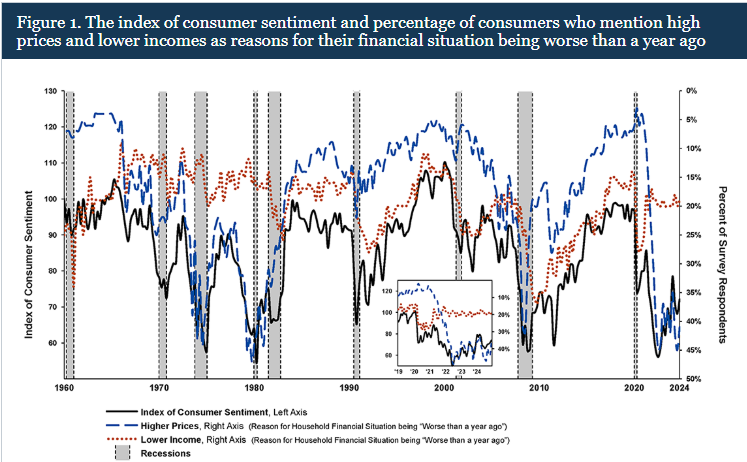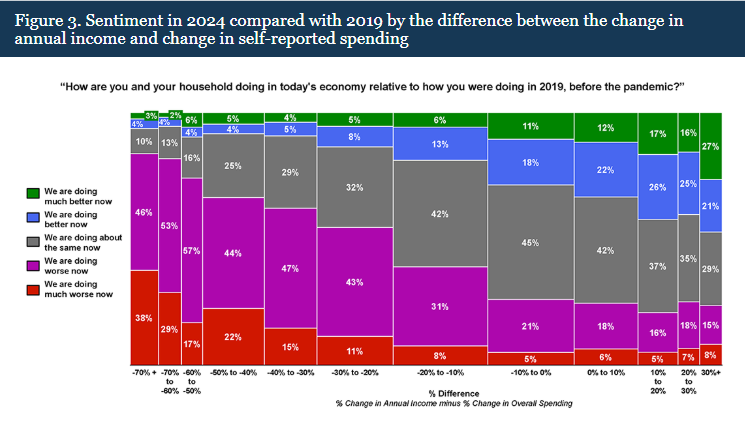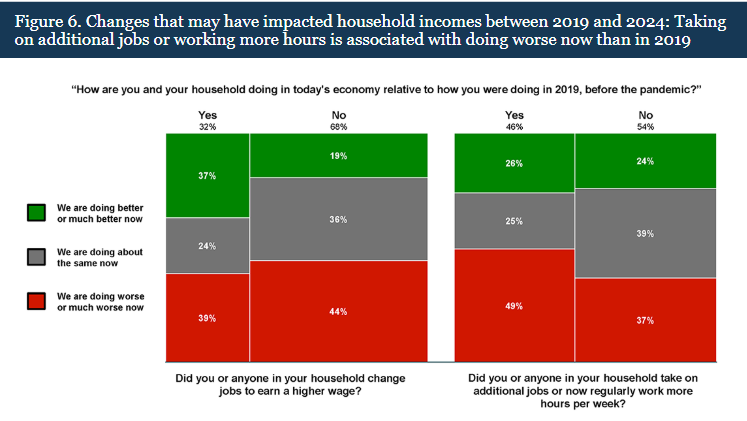Sentiment vs. Spending: The Fed’s Critical Warning for Markets
As U.S. markets navigate a volatile stretch dominated by tariff threats and rising geopolitical tensions, one of the most important – and least understood – dynamics unfolding is the disconnect between what consumers say and what they do. A new report from the Federal Reserve, based on an extensive survey linking consumer sentiment to verified purchase data, drives this point home: American consumers are pessimistic — but they are still spending.
The Fed’s study, using nearly 10,000 responses collected by Numerator over late 2024, reveals that while consumer sentiment has cratered to levels comparable with the Great Financial Crisis, real retail spending, even after inflation adjustments, remains surprisingly strong. This divergence — dubbed by some as the "pessimism paradox" — is poised to become a critical issue for interpreting incoming economic data, especially as new tariffs threaten to weigh more heavily on the economy over the coming months.

Source: Federal Reserve
The Findings: Feelings vs. Facts
The Fed’s study found that 43% of respondents said they were doing worse than in 2019, despite the fact that a majority actually reported higher household incomes. Notably, consumers consistently overestimated the inflation they experienced: although only about 1.7% of households experienced more than 40% cumulative inflation from 2019 to 2024, nearly a quarter believed they had. This perception gap has fueled widespread negativity even as real purchasing power has largely been preserved for most households.

Source: Federal Reserve
Moreover, despite widespread complaints, most households are actually buying — not just spending — more than they did five years ago. Verified retail panel data shows that even households reporting lower incomes or a sense of "doing worse" were still consuming more real goods in 2024 than before the pandemic.
In short: survey respondents report hardship, but their cash registers tell a different story.
Why Sentiment Has Diverged From Reality
The Fed study underscores that consumer sentiment used to track most closely with income growth. Since mid-2022, however, sentiment has tracked more tightly with concerns about rising prices. Even as wages have climbed faster than inflation since mid-2023, many households perceive that their incomes have lagged behind their cost of living. Behavioral economics offers some insight: people internalize wage gains as personal achievements but see price increases as unfair external burdens.

Source: Federal Reserve
Additionally, adapting behaviors — such as clipping coupons, shopping at discount stores, and taking on additional work hours — has weighed heavily on perceptions of economic well-being. The Fed found that the more coping strategies consumers reported adopting, the more negative their sentiment became, regardless of their actual income growth or spending power.
Tariff Risks Loom Large
Understanding this disconnect matters even more now, as new U.S. tariffs on Chinese goods threaten to push consumer prices higher in the coming months. If tariffs meaningfully dent spending, it could finally pull the hard data down to meet the gloom seen in surveys. Alternatively, if history is any guide, consumers may simply grumble louder while adjusting their purchasing patterns, keeping actual consumption more resilient than sentiment suggests.
This divergence complicates forecasting: will companies see demand destruction, or simply face a more disgruntled customer base? Investors expecting a direct read-through from sentiment surveys like AAII, University of Michigan, or regional manufacturing indexes like the NY Empire and Philly Fed reports may be misled if they assume sentiment deterioration alone signals imminent economic contraction.
Conclusions and Market Implications
The Fed’s findings point to several crucial conclusions:
- Sentiment surveys have become weaker leading indicators. Negative feelings have not reliably translated into weaker consumer behavior since the pandemic recovery period, especially in inflationary episodes.
- Behavioral adaptation matters. Even consumers experiencing income gains reported worse sentiment if they had to exert more effort to maintain their lifestyles.
- Tariffs could tilt the balance. While consumers have so far powered through pessimism, another round of price shocks could push sentiment low enough — or strain purchasing power enough — to finally dent spending materially.
- Monitor actual retail and income data, not just surveys. In the coming months, retail sales, personal income reports, and employment data will be far better gauges of economic strength than surveys alone.
In the end, the message is clear: what consumers feel does not always predict what they spend. With tariff-related economic turbulence ahead, it’s more important than ever to track reality over rhetoric.









